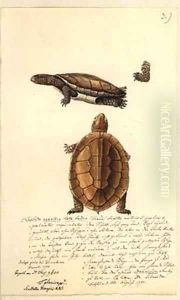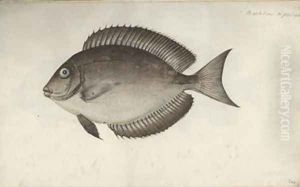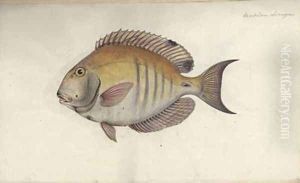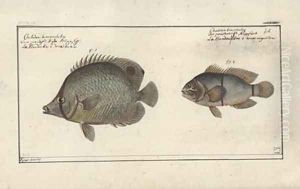Friedrich August Kruger Paintings
Friedrich August Krüger was a German artist, primarily known for his works as a painter of animals and hunting scenes. Born in 1797, in Neuruppin, a town in the Prussian province of Brandenburg, Krüger showed an early talent for art. His passion for animals and the natural world was evident in his works from a young age. He managed to capture not only the physical accuracy of the animals he painted but also the essence of their behavior and their interaction with their environment.
Krüger's work was influenced by the Romantic movement that was sweeping through Europe during his lifetime. This movement emphasized emotion and individualism, as well as a glorification of the past and nature, which is reflected in the subjects Krüger chose to depict. His paintings often illustrated the power and grace of animals, setting them against the backdrop of the untamed wilderness or within the context of the hunt, a popular and noble pastime of the era.
Unfortunately, Friedrich August Krüger's life was cut short when he died in 1832, at the age of 35. The cause of his death is not widely documented, which is not uncommon for artists who were not as celebrated in their own era as they might be posthumously. Despite his early death, Krüger's works continued to be appreciated by art enthusiasts and collectors, particularly those with an interest in Romantic art and animal portraiture.
Krüger left behind a legacy that contributes to our understanding of German Romantic art. While he may not be as well-known as some of his contemporaries, his paintings remain valued for their contribution to the genre of animal painting and for their embodiment of the Romantic spirit. His art captures a bygone era where the relationship between humans and the natural world was a subject of both reverence and artistic exploration.



